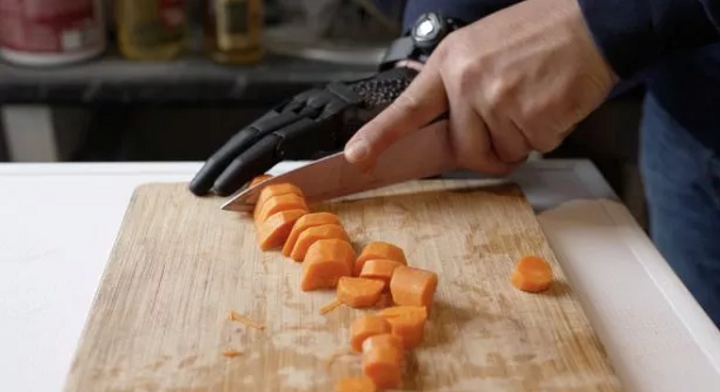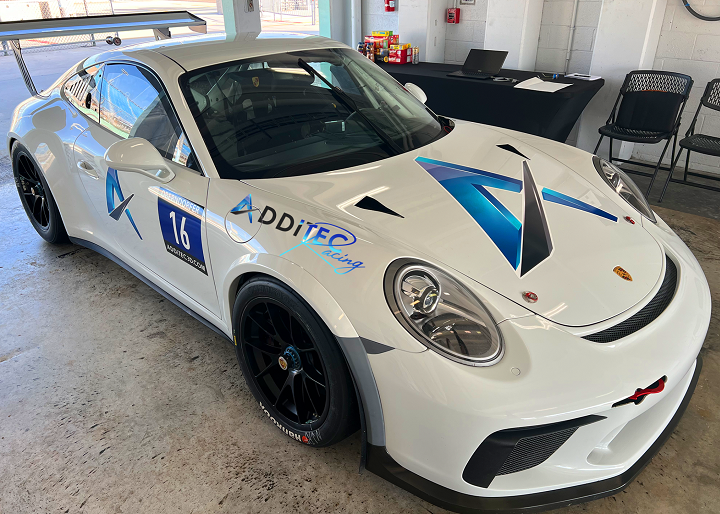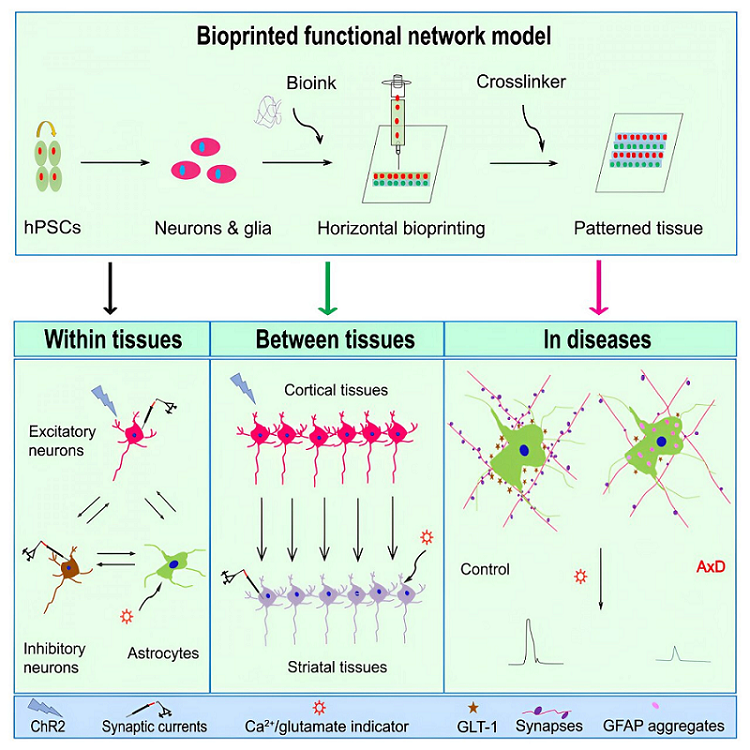In 3D Printing News Briefs, we’re starting with automotive applications, as ADDiTEC launched its new racing division. Moving on, 3D-Fuel is now part of the Nexa3D family, and researchers have produced the first 3D printed functional human brain tissue. We’ll wrap up with medical news, with a 3D printed skullcap for a young patient and a 3D printed Open Bionics prosthetic hand for a teacher.
ADDiTEC Launches Exciting New Racing Division
ADDiTEC, which provides high-performance additive manufacturing solutions, recently launched a new division that showcases its focus on motorsports and the use of high-performance AM in the automotive industry. The launch of ADDiTEC Racing is a strategic move for the company, as it’s now actively participating in the Porsche GT3 Cup Trophy and other series races in the U.S. Top-tier professional drivers were recruited, and race assets like support trailers, AM systems, and vehicles were acquired, and the division had its debut race just a few weeks ago at the HOMESTEAD-MIAMI SPEEDWAY in Florida. ADDiTEC Racing also helps drive industry adoption of AM, as the division uses racecar parts that were 3D printed using its liquid metal jetting (LMJ) and laser directed-energy-deposition (LDED) technologies. Plus, each race event will feature live demonstrations of its automotive part 3D printing.
“We believe that ADDiTEC Racing will not only showcase our technological prowess but also serve as a catalyst for accelerating our presence in the automotive sector. By competing at the highest level of motorsports and demonstrating the capabilities of our additive manufacturing solutions, we aim to raise awareness and drive adoption of our technology within the industry,” said Brian Matthews, CEO at ADDiTEC.
3D-Fuel Joins Nexa3D Family
3D printing plastic-based filament manufacturer 3D-Fuel has announced a major milestone—its materials are now part of the Nexa3D family. The company, which has been around since 2014, produces 18 different filament lines in up to 40 colors, which are used around the world, and features plant-based inputs and plant-captured carbon as feedstock. 3D-Fuel says Nexa3D shares its “passion for sustainability and customer satisfaction,” and will now be adding Nexa3D’s XiP desktop 3D printer and wide range of validated resins, metals, and thermoplastic materials to its portfolio. The overall goal is to offer better support documentation and materials profiles, faster fulfillment times, better turnaround times on customer support, and have more products reliably in stock, as well as invest in R&D efforts. Plus, customers can now earn and redeem 3D-Fuel Rewards points across an even more complete 3D printing ecosystem.
“Your continued trust and partnership have driven 3D-Fuel’s success, and we are grateful for your ongoing support. We are confident that this new chapter will bring you exciting opportunities and benefits,” John Schneider, the Founder and CEO of 3D-Fuel, wrote in a letter to customers.
“As we embark on this journey with Nexa3D, we look forward to continuing to serve you with the same level of dedication and passion that you expect from 3D-Fuel. We will do our best not only to ensure continuity but also to improve your customer experience.”
Please contact 3D-Fuel’s customer support team if you have any questions or concerns.
First 3D Printed Functional Human Brain Tissue
Researchers from the University of Wisconsin-Madison’s Waisman Center say they’ve created the first functional 3D printed brain tissue, which will help in studying the brain’s function and various neurological disorders, such as Alzheimer’s and Parkinson’s disease. What’s interesting is that they used a horizontal 3D printing approach, rather than typical vertical layer stacking. Using a soft bioink gel, the team built up layers of neurons produced from induced pluripotent stem cells, and kept the tissues thin on purpose to enable the best oxygen and nutrient intake for the neurons. Multilayer printing enabled the neurons to build connections with each other, and within these networks, chemical messengers called neurotransmitters helped pass signals between the neurons—just like what’s been observed in actual human brains. This method enables control over the types of cells and their arrangement, which is lacking in printed brain organoids.
“Probing how human neural networks operate is hindered by the lack of reliable human neural tissues amenable to the dynamic functional assessment of neural circuits. We developed a 3D bioprinting platform to assemble tissues with defined human neural cell types in a desired dimension using a commercial bioprinter,” the researchers wrote in the abstract for their study. “The printed neuronal progenitors differentiate into neurons and form functional neural circuits within and between tissue layers with specificity within weeks, evidenced by the cortical-to-striatal projection, spontaneous synaptic currents, and synaptic response to neuronal excitation. Printed astrocyte progenitors develop into mature astrocytes with elaborated processes and form functional neuron-astrocyte networks, indicated by calcium flux and glutamate uptake in response to neuronal excitation under physiological and pathological conditions. These designed human neural tissues will likely be useful for understanding the wiring of human neural networks, modeling pathological processes, and serving as platforms for drug testing.”
Young Patient Receives PEEK 3D Printed Skullcap
In late December, 10-year-old Felix was helping his family with some forestry work in Bavaria when a rope clamp came loose, and the metal part penetrated the top of his skull. He was taken to Salzburg University Hospital, where CT scans showed the bony roof of his skull was partially shattered, and surgeons spent four hours removing the rope clamp and bone fragments from the boy’s brain, inserting an intracranial pressure probe, and temporarily closing his skull. Thankfully, there were no complications after this initial surgery, but a large part of Felix’s skull roof was still missing. Luckily, the hospital has its own 3D printing laboratory for precision medicine applications, and had already printed 24 adult implants in-house. Werner Wurm, head of the clinic’s 3D laboratory, explained that they worked with surgeons to design and print a patient-specific PEEK skullcap implant within five days.
Because Felix’s cracked bones made it hard to accurately model the implant on his skull, the lab mirrored the existing shape of his skull using the 3D data set from his CT scans and made a model of the opposite side of his skull. They then constructed the missing part of his skull based on this model, and after a nearly three-hour operation, the 3D printed implant fits Felix to within half a millimeter. This PEEK skullcap should remain in his head for decades, though Roman Metzger, head of the Salzburg University Hospital for Pediatrics and Adolescent Medicine, says that his eventual growth may result in a bone gap that could have to be covered again in the future. For now, the young boy is just happy to be out of the hospital five weeks after the accident, rather than months, and starting school again on a part-time basis.
Teacher Gets New Lease on Life with 3D Printed Open Bionics Hand

Suleman Chohan with his new hand. Chohan can now cook again thanks to the hand. Image: Open Bionics / SWNS
Finally, 50-year-old teacher Suleman Chohan of East London lost his hand in an industrial accident 30 years ago, but his life has been transformed with a new 3D printed prosthetic. Last year, British robotics company Open Bionics, which was looking to test the new prototype of its Hero Gauntlet, reached out to Chohan. This active partial hand prosthetic is custom-made for each user with 3D scanning, modeling, and printing, and allows people born without fingers, or have had partial hand amputation, to regain functionality. Chohan is the first person in Britain to be fitted with this new prosthetic, which he calls “a work of art.” For the first time since the 1990s, he can now cook, ride a mountain bike, and play virtual reality (VR) games, thanks to the Hero Gauntlet, which Open Bionics mechanical engineer Hellie Mutter says is very intuitive and gives test users more confidence.
“It’s amazing. Honestly, it’s brilliant stuff they can do. When I had my amputation, there wasn’t much around. My NHS centre gave me a latex hand that didn’t have any function. It was heavy, so I didn’t really use it,” Chohan said.
“I feel comfortable when I’m out shopping, I feel comfortable in the kitchen, chopping vegetables. I love VR gaming but I couldn’t hold both controllers. It really frustrated me, up to a point where I taped the controller to my amputation, which was weird and didn’t really work anyway. It feels so great to be able to hold both controllers.”
Subscribe to Our Email Newsletter
Stay up-to-date on all the latest news from the 3D printing industry and receive information and offers from third party vendors.
You May Also Like
New Report: Semiconductor Industry to See $1.4B in 3D Printing Revenues by 2032
“The semiconductor sector has become the most strategically significant area of global industry.” Truer words are hard to come by when it comes to the modern world, and they are...
Will Photonic-Crystal Lasers Revolutionize 3D Printing?
Powder bed fusion (PBF) for metals and polymers predominantly utilizes lasers as the primary heat source. Some directed energy deposition (DED) technologies also employ lasers, while various vat polymerization methods...
3D Printing Unpeeled: Orbex Investment, IndoMIM and HP, Ultrasonic Waves
INDO-MIM has bought three HP Metal Jet S100 printers, operating two in India and one in Texas. This is a win for HP because the company has deep experience in...
3D Printing Webinar and Event Roundup: April 21, 2024
It’s another busy week of webinars and events, starting with Hannover Messe in Germany and continuing with Metalcasting Congress, Chinaplas, TechBlick’s Innovation Festival, and more. Stratasys continues its advanced training...



































